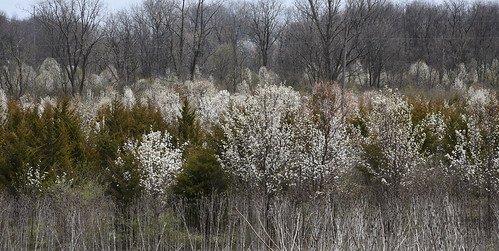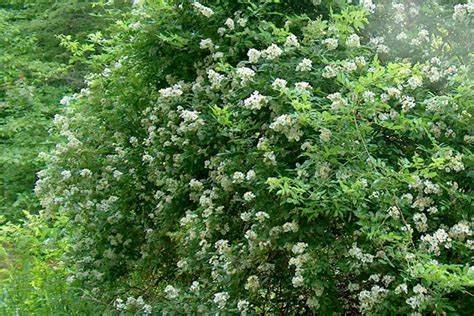The wooded common areas of our community associations and places of worship are both an amenity for humans and an important part of our infrastructure, cooling the environment and soaking up stormwater that otherwise causes downstream flooding. The woods are also the only home for our non-human neighbors. In times past, these areas would take care of themselves, but those days are past in Fairfax County. The trees are under numerous threats, but the invasive non-native tree-killing plants constitute one of the worst of them, while at the same time being something we can control if we take action. That action can be complicated, though, and requires dedicated leadership, expertise, long-term planning, and fund raising. This grant program is intended to help communities start that process and to provide some funding to ten of them.
Invasive plants are also threatening the shrub and ground levels, without which there will be no new trees growing to replace the older ones in aging forests. Nevertheless, in most cases the first priority is to perform “treeage” on the existing trees that are under an imminent threat of being smothered, strangled, and weighed down. (For a fuller discussion of priorities, please see the page on invasives control on the Plant NOVA Natives website.) Once the trees fall, more light reaches the understory and leads to an explosion of invasives at that level. This grant will help pay for control of any of the following non-native vines and vine-like shrubs if they are actively threatening existing native trees. In addition, it can be used to help pay for control of the three invasive tree species that are crowding out our native trees on a large scale (counting Autumn Olive as a tree, though technically it is a shrub.)
It is likely that at least a million trees are at risk from non-native invasive vines in Fairfax County. More and more infestations become evident every year. Looking ahead, it is not being alarmist to project that within the lifetime of our children, unless we take action now, most of our wooded common areas will have become an impenetrable tangled mess of invasives that are an invitation to dumping and that support few birds. Whether or not your community is chosen for this grant, please find a way to stop this possibility from becoming reality.
The Mini-Grant
We will award mini-grants for rescuing trees that are being threatened by certain invasive plants. Communities can apply for a reimbursement grant of $3,000, to be matched by $1500, for which volunteer labor is one option. The money can be used to save native trees that are at risk from any of these invasive non-native plants:
Invasive non-native vines (English Ivy, Five-Leaf Akebia, Chinese and Japanese Wisteria, Japanese Honeysuckle, Porcelainberry, Oriental Bittersweet, Kudzu, Wintercreeper)
Multiflora Rose
Invasive non-native trees (Tree-of-Heaven, Callery Pear, Autumn Olive)
Who is eligible? Homeowners Associations, Condo Associations, Community Associations and Faith Communities in Fairfax County with common area and any of the invasive non-native plants listed above.
What are the Grant Requirements? The grant requirements for application, execution, and reporting are available here in PDF format to download or share via hyperlink. Applications were due September 30, 2023. **We are not accepting additional applications at this time**
Pre-Application Support: As part of your application you will need to identify the threatened trees and the invasive plants in your common area. We are offering a free site visit by trained volunteers to help you with this required identification process and development of an Invasives Control Plan. The approval of your community’s President is required to schedule this visit. Please submit your request by August 31, 2023. **We are not accepting grant visit requests at this time**
Ready to complete your application? Click below for the online form. you have concerns or questions please contact us.
Audubon at Home and Plant NOVA Natives




